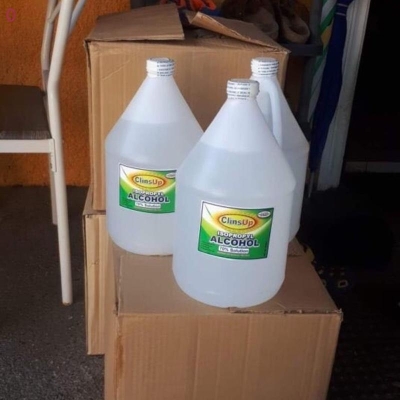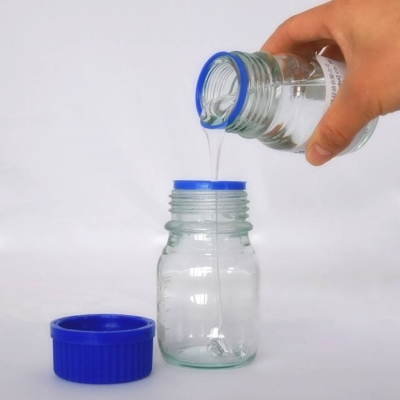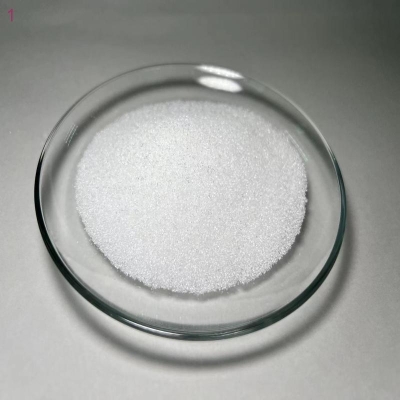-
Categories
-
Pharmaceutical Intermediates
-
Active Pharmaceutical Ingredients
-
Food Additives
- Industrial Coatings
- Agrochemicals
- Dyes and Pigments
- Surfactant
- Flavors and Fragrances
- Chemical Reagents
- Catalyst and Auxiliary
- Natural Products
- Inorganic Chemistry
-
Organic Chemistry
-
Biochemical Engineering
- Analytical Chemistry
-
Cosmetic Ingredient
- Water Treatment Chemical
-
Pharmaceutical Intermediates
Promotion
ECHEMI Mall
Wholesale
Weekly Price
Exhibition
News
-
Trade Service
Synthetic rubber is one of the three major synthetic materials.
Since the reform and opening up, after more than 40 years of rapid development, my country's high-performance synthetic rubber materials industry has grown from scratch, from small to large, and has achieved rapid development.
Characteristics and application fields of high-performance synthetic rubber materials
The high-end grades and functional varieties of general synthetic rubber mainly refer to the functionalized solution polystyrene butadiene rubber, neodymium butadiene rubber, star-shaped halogenated butadiene rubber, which are used in the tread, sidewall and inner liner of high-performance tires, which can significantly improve tire performance.
At present and for a period of time in the future, the advanced general rubber and special rubber materials urgently needed for the development of national defense and national economy mainly include the following types.
Solution polymerized styrene butadiene rubber (SSBR) is different from traditional emulsion polystyrene butadiene rubber.
Hydrogenated nitrile rubber is a highly saturated rubber material made by selectively hydrogenating the butadiene units on the chain forging of nitrile rubber for the purpose of improving the heat resistance and aging resistance of nitrile rubber (NBR).
IIR/HIIR is a linear polymer material synthesized by low-temperature cationic polymerization of isobutylene and a small amount of isoprene.
Hydrogenated styrene-based thermoplastic elastomers (HSBCs) are thermoplastic elastomers, SBS and SIS, after hydrogenation, which turns most unsaturated double bonds into saturated bonds, which not only retains its own excellent elasticity, but also heat resistance, light resistance and heat resistance The performance has been greatly improved.
Isoprene rubber is synthesized from isoprene and has the closest structure to natural rubber.
It is the best substitute for natural rubber and can be used in industries such as tires.
Thermoplastic vulcanizate, also known as dynamically vulcanized thermoplastic elastomer, is achieved by vulcanizing the rubber phase during the melt blending of the plastic phase (such as polypropylene) and the rubber phase (such as EPDM) to obtain a granular vulcanized rubber phase that is stable in micro-domains.
The thermoplastic elastomer material made in the plastic phase has both the high elasticity of traditional rubber and the thermoplastic processing performance of plastic materials, with low density, recyclability, easy processing, low energy consumption, long-term aging resistance, etc.
Excellent features.
Silicone rubber is a special type of synthetic rubber in which linear polysiloxane is mixed with reinforcing fillers, functional fillers and additives, and after vulcanization under heating and pressure conditions, it becomes a kind of special synthetic rubber with a network structure.
It has excellent resistance to high and low temperature, weather resistance, ozone resistance, arc resistance, electrical insulation, moisture resistance, high air permeability and physiological inertness.
It has a wide range of applications in modern industry, electronic and electrical, automotive, construction, medical, personal care and other fields, and has become an indispensable advanced high-performance material in aerospace, defense and military industry, intelligent manufacturing and other fields.
Fluorine rubber refers to a fluorine-containing rubber material containing fluorine atoms on the carbon atoms of the main chain or side chain, and its special properties are determined by the structural characteristics of the fluorine atoms.
Fluorine rubber can be used for a long time at 250°C, and the limit use temperature can reach 300°C, while the limit use temperature of traditional EPDM and butyl rubber is only 150°C.
In addition to high temperature resistance, fluorine rubber also has excellent oil resistance, chemical resistance, acid and alkali resistance.
It has the best overall performance among all rubber elastomer materials.
It is mainly used for rockets, missiles, aircraft, ships, automobiles and other vehicles.
Special purpose fields such as sealing and oil-resistant pipelines are indispensable key materials for the national economy and national defense industry.
Development status of high-performance synthetic rubber material industry at home and abroad
(1) Synthetic rubber
In 2017, the global synthetic rubber production capacity exceeded 2×107t/a.
In 2018, the total global production capacity was approximately 2.
042×107t/a, mainly distributed in Asia, North America and Europe.
China is the largest producer and consumer with an annual production capacity of 5.
93×106t, accounting for about 29% of the world's total production capacity (see Figure 1).
In 2020, the world's synthetic rubber production capacity will reach 2.
2×107t/a.
Among the various types of rubber, the largest increase in production capacity is SSBR, followed by IIR and EPDM (see Figure 2).
In 2017, the global production of synthetic rubber (SR) was 1.
505×107t, a year-on-year increase of 1.
4%; the consumption of synthetic rubber was 1.
519×107t, a year-on-year increase of 2.
4%.
In 2018, the world's total SR production capacity was 2.
042×107t, the output was 1.
533×107t, the capacity utilization rate was about 75%, and the overall capacity was overcapacity.
By 2025, the output and consumption will be close to 2×107t respectively.
There are 50 synthetic rubber manufacturers in my country, with a total production capacity of 5.
93×106t/a.
It has formed a quadruple structure of Sinopec Corporation (29%), China National Petroleum Corporation (20%), private enterprises (29%), and Taiwan-funded and foreign-funded enterprises (22%).
Sinopec has advantages in BR and SBCs, PetroChina has advantages in ESBR, private enterprises (32 companies in total) have advantages in IIR and IR, and Taiwan-funded and foreign companies have advantages in EPDM and NBR.
In 2017, my country's general synthetic rubber output was 3.
557×106t, export volume was 1.
41×105t, import volume was 1.
365×106t, apparent consumption was 4.
781×106t, which hit a record high.
The supply and demand of each main rubber species is shown in Table 1 The output in 2018 was 3.
67×106t, and the capacity utilization rate was 62%.
In 2020, my country's synthetic rubber demand will exceed 4.
8×106t/a.
The transformation of the national economic structure has not only put forward product structure adjustment requirements for the synthetic rubber business, but also brought rare opportunities for the development of advanced basic materials business.
(2) Fluorine rubber
The main varieties of fluorine rubber are conventional binary fluorine rubber, ternary fluorine rubber, perfluoroether rubber, carboxy-nitroso fluorine rubber, fluorinated phosphazene rubber, low temperature resistant fluorine rubber and fluorine silicone rubber.
At present, the main fluorine rubber manufacturers And the grades are shown in Table 2.
As a special rubber, fluorine rubber is used as a sealing material under various harsh conditions due to the special properties conferred by fluorine atoms.
At present, my country's conventional fluororubber has been industrialized, the scale of the industry is leading internationally, and the performance is equivalent to that of the world.
Special fluororubbers are also gradually domestically produced, and the types of products are gradually improved.
In 2017, the total global production capacity of fluorine rubber was about 4.
77×104t/a, of which China exceeded 2.
34×104t/a, accounting for about 50% of the global total production capacity.
In recent years, the world's main fluororubber manufacturers are shown in Table 3.
In recent years, new or planned fluororubber projects have been mainly concentrated in China.
Foreign companies such as Daikin Industrial Co.
, Ltd.
have built a 3200t/a plant in Changshu; Solvay Specialty Polymers (Changshu) Co.
, Ltd.
has also built a 3000t/a plant in Changshu.
Equipment, DuPont's Chemours Company and Zhonghao Chenguang Chemical Research Institute Co.
, Ltd.
cooperated to build a 5500t/a plant.
At present, Zhejiang Juhua Group and other companies are also planning to build a 3000t/a high-performance fluorine rubber device.
Since 2000, with the rapid development of the national economy, the demand for fluorine rubber in various countries has increased substantially.
The global demand in 2017 was about 3.
35×104t, and it will reach 4×104t in 2020.
The demand for fluorine rubber in my country in 2017 is about 1×104t.
It is estimated that during the "14th Five-Year Plan" period, the demand for fluororubber in my country will reach 1.
5×104t.
With the further acceleration of China’s national defense modernization, the research and development of new generation combat vehicles and fighter jets has promoted the application of various new fuels and propellants.
The application of fluoroelastomers in the defense and military industry has developed from seals and electrical circuit sheaths to The main molding materials of various new fuel pipelines have considerable market potential.
At present, domestic fluororubber manufacturers are still unable to fully meet the needs of the military industry due to gaps in industrial scale, variety structure, and processing capabilities.
(3) Silicone rubber
Silicone is a high-performance new material, and the global organic silicon demand compound growth rate is about 5%.
Major global silicone manufacturers include Dow Group, Momentive Advanced Materials Group, Shin-Etsu Group, Wacker International Group Co.
, Ltd.
, China National Bluestar (Group) Co.
, Ltd.
, etc.
The production facilities are mainly distributed in China, the United States, Germany, Britain, Japan, France, South Korea and other countries.
Since 2000, as my country has become the world's manufacturing center and the silicone industry has developed rapidly, my country has become an important country in the world for the production and marketing of silicones.
As of the end of 2017, there were 13 methylsiloxane monomer manufacturers in the mainland, with a total polysiloxane production capacity of 1.
38×106t/a, an output of 1.
02×106t, and an apparent consumption of 9.
7×105t; in 2018 , Apparent consumption exceeded 1×106t for the first time, reaching a record 1.
04×106t, a year-on-year increase of 7.
4%, of which the largest proportion of consumption was in the fields of construction, electrical and electronic, medical and personal care.
In the future, in addition to the steady growth of demand in traditional applications, cutting-edge applications such as new energy, artificial intelligence, fifth-generation mobile communication technology (5G), and high-end medical care will help my country's silicone rubber industry move towards high-quality development.
During the "13th Five-Year Plan" period, my country's silicone rubber industry has made great progress in industrial development, structural adjustment, technological progress, energy saving and emission reduction, but it is still compared with the world's advanced level in terms of development quality, technical level, and application development.
There is a big gap.
The pattern of small production scale, low concentration, and low degree of automation of silicone rubber has not been fundamentally changed.
Safety, environmental protection, and automated production technology need to be further improved.
The main problems facing the development of high-performance synthetic rubber materials in my country
(1) The industry is large but not strong, and the competitiveness of enterprises is weak
Since the beginning of the 21st century, with the rapid development of the national economy, the domestic synthetic rubber industry has grown rapidly.
During the ten years of the "Eleventh Five-Year Plan" and the "Twelfth Five-Year Plan", state-owned, private and Taiwanese/foreign-funded enterprises are keen to invest in the synthetic rubber industry.
This led to a blowout growth in domestic production capacity, which was significantly higher than the domestic synthetic rubber production and consumption growth in the same period.
However, signs of surplus began to appear in 2008, and the situation of surplus gradually expanded after 2012.
Affected by market prices and production costs, coupled with the impact of imported products.
In 2017, the domestic synthetic rubber output totaled 3.
557×106t, and the effective capacity utilization rate was 64.
0%, which was 8.
8% lower than the world's average capacity utilization rate of synthetic rubber devices.
Adjusting product structure and improving market competitiveness have become the primary issues facing the synthetic rubber industry.
(2) Insufficient supply of mid-to-high-end brands, coexistence of shortage and structural surplus
After 70 years of development, my country has been able to produce all general synthetic rubber varieties, and its production capacity, output, and consumption have also become the world's first.
However, there are also problems such as serious product homogeneity.
The proportion of high value-added products is still low, and many special high-performance products have long been dependent on imports.
Only the isoprene rubber industrial device has broken through the traditional technical paradigm, adopting a rare earth catalytic system and realizing the industrialization of isoprene rubber through a brand-new technical route, but there are also problems such as unstable product quality.
High-end solution polymerized styrene butadiene rubber and bromobutyl rubber are mainly imported.
China is currently unable to produce high Mooney viscosity ethylene propylene rubber grades.
There are only more than 20 grades of nitrile rubber, of which ultra-high nitrile nitrile rubber (NBR), carboxylated nitrile, hydrogenated nitrile, powdered nitrile and other brand products are mainly imported.
There is still a big gap in the variety and application of domestic fluororubber, especially the backward processing and application technology.
For example, fluororubber seals such as automobile crankshaft oil seals and fuel pipes are currently controlled by foreign giants.
In addition, the level of fluorine rubber parts in other high-end fields such as civil aviation, petroleum, chemistry and medical treatment, construction, light-emitting diodes (LED), solar cells, etc.
are also in a backward position.
(3) The innovation ability is not strong, and the gap in the development of new technologies is obvious
Facing the future, the international synthetic rubber field will continue to strengthen technological innovation, and the development of new technologies is mainly concentrated in three aspects: product innovation, process innovation and environmental friendliness.
In terms of product innovation, it mainly relies on basic research results such as controllable free radical polymerization and controllable positive ion polymerization to develop new synthetic rubber products with brand-new structures and properties.
The research of synthetic rubber enterprises in this field in my country has just started.
In terms of process innovation, it mainly focuses on the optimization of production processes, the improvement of equipment, and the development of product application formulas to carry out innovative research to improve the comprehensive technical level of the device.
my country's synthetic rubber companies have not much originality in this regard.
In terms of environmental friendliness, the first is the innovative development of new high-performance synthetic rubber grades for the production of green tires, with a view to comprehensively improving the wet skid resistance, rolling resistance and fuel economy of the tires; the second is to focus on environmental protection requirements and develop compliance with environmental protection regulations.
New additives and extender oils; the third is to focus on the greening of raw materials and develop synthetic rubber using biomass as raw materials.
At present, there is still a lack of market-oriented professional technical service support in the development of new grades such as high-performance solution polymerized styrene-butadiene and rare earth isoprene for green tires.
(4) The impact of Sino-US trade frictions on the synthetic rubber field
,,2009,。,。,,,,。,,。
,。,,“”,。
()
1.
、、。、,60%。SBS、SIS,SEBS、SEPS、、,、、,21%。、、、。、、(、)、。2025,;,。
2.
,,、、;,、(VOC)、,、;。
3.
,,、。
4.
0,、、、,,、,、、,,、、,,,70%。
、、、,、。、、,–––。
()
1.
、、。SSBR,SSBR,SSBR、,。
2.
HNBR22%~45%HNBR。HNBR,HNBR。。,HNBR,HNBR、HNBRHNBR。
3.
/
,,、。。,,,2035、、,。
4.
,,,、,、。
SBS、SBS、SBS,、。,–(RAFT)(SBC)。,。
5.
,Ti。,、、、。
6.
,EPDM/PP、IIR/PPTPV,,,、TPV,–/TPV、TPVTPV、TPVTPV。
7.
()、(、)。,、、,,。、、。
8.
,40%,25%,、35%。、,,。,、,、。
(),,
,,,,“”。,、、、。,,。
(),
、,,,,,。
(),
,,,,,。(:,,,)
:《》







